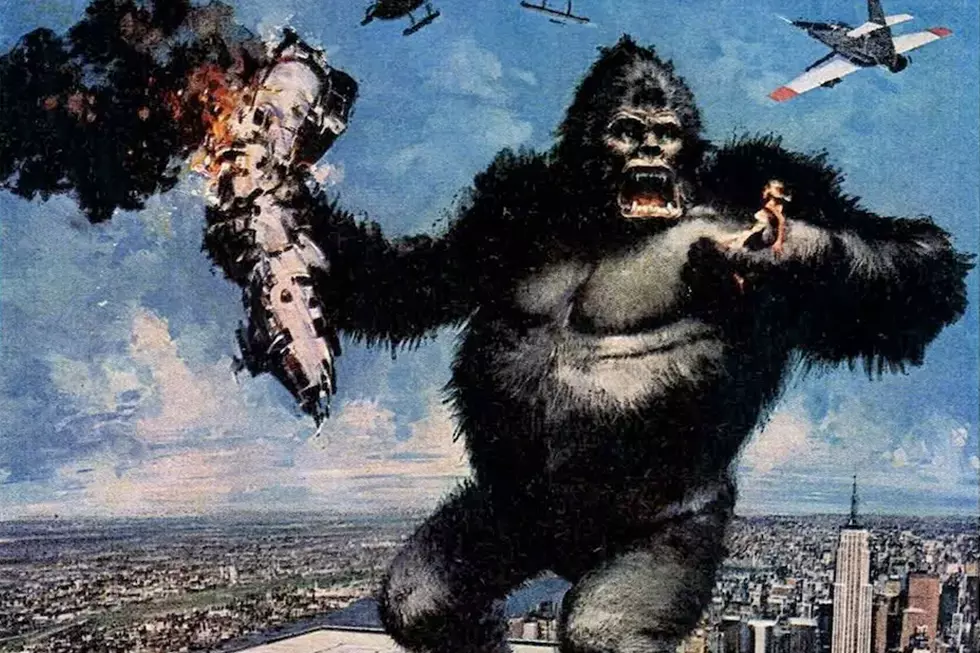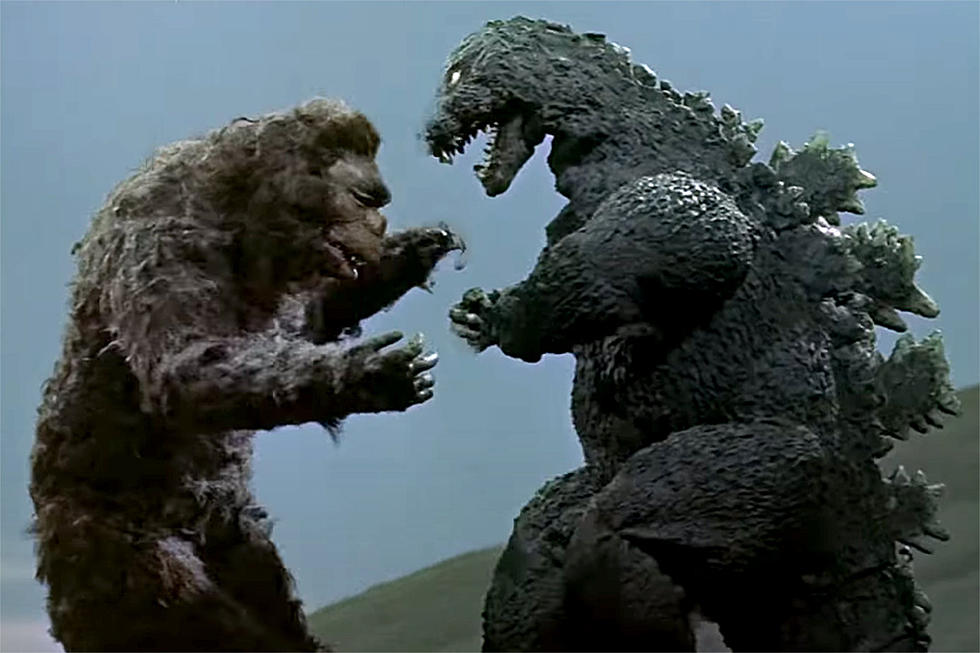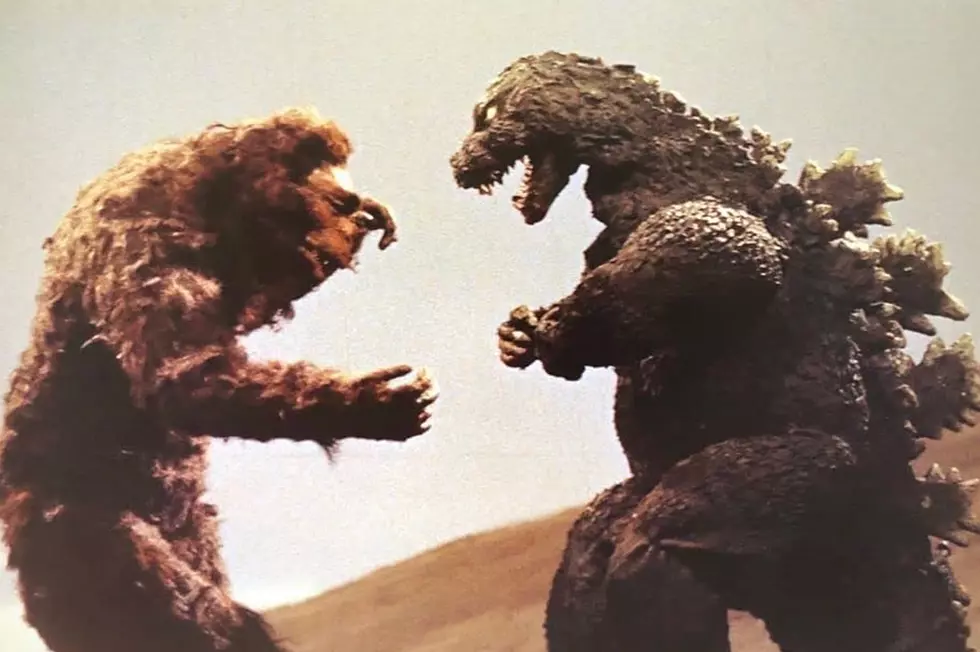
45 Years Ago: A New ‘King Kong’ Tries to Outdo ‘Jaws’
"No one cry when 'Jaws' die," famed Italian movie producer Dino De Laurentiis memorably declared about his 1976 remake of King Kong. "But when the monkey die, people gonna cry."
Inspired by the massive financial success of Jaws the previous summer, De Laurentiis was on a mission to make a film that outdid Steven Spielberg's film in every way. His film would be bigger, sexier, more spectacular and, maybe most importantly, make even more money.
Did he succeed? Not really. But De Laurentiis did manage to make an entertaining movie, turn a tidy profit and continue to establish himself as a filmmaking titan on two continents who sometimes won huge, sometimes lost huge, but always entertained. Not bad for a guy who got his start as a traveling salesman for his dad's pasta company.
De Laurentiis' King Kong, which premiered on Dec. 17, 1976, was directed by John Guillermin and written by Lorenzo Semple Jr. It was an intelligent pairing.
Guillermin had a reputation as an adventure-movie maestro, and in his long career had directed Tarzan pictures, big-budget war films, comedies and an epic disaster film, 1974's The Towering Inferno, which had been nominated for eight Academy Awards, including Best Picture. Semple had equally broad experience, cutting his teeth on the comedic Batman TV series in the '60s, before moving into writing grittier '70s fare like The Parallax View, The Drowning Pool and Three Days of the Condor.
De Laurentiis also made great choices with his two lead actors. As his hero, he cast a young Jeff Bridges, who had already been nominated for two supporting actor Oscars (for The Last Picture Show and Thunderbolt and Lightfoot). And as his heroine — the damsel in distress who would capture Kong's heart — he cast Jessica Lange in her first screen appearance.
Watch the Trailer for 1976's 'King Kong'
The film tells its familiar story in a passably fresh way. Petroleum executive Fred S. Wilson (Charles Grodin) has stumbled across some satellite photographs indicating what he thinks is an undiscovered island in the Pacific, which is perpetually shrouded by a fog bank. Certain that it sits atop massive untapped oil reserves, he organizes an expedition to claim them.
A primate paleontologist named Jack Prescott (Bridges) gets word of the expedition and stows away on the ship, convinced that the island is actually home to a gigantic creature. (How big? Early on, Prescott speculates that the fog around the island could be the result of carbon dioxide being breathed out by Kong.)
Before they reach the island, they come across a castaway in a life raft: a woman named Dwan (Lange) who announces that she reversed the middle letters of her given name, Dawn, to make it more interesting. She had been aboard a yacht owned by a pornographic movie director who had promised to cast her in a film before his boat exploded. The oil expedition rescues her and they all go to the mysterious island, where Dwan is captured by the natives and sacrificed to Kong.
From there, De Laurentiis' King Kong moves forward along the same lines as the 1933 original. Prescott rescues Dwan, and Wilson captures Kong and decides to take him back to New York as a mascot for his oil company. There, Kong breaks free and grabs Dwan, climbing the World Trade Center and then being attacked by helicopters and falling to his death. (Or almost death, because De Laurentiis would resurrect him 10 years later for his ill-fated sequel, King Kong Lives.)
Like so many of the films in De Laurentiis' fabled producing career (which stretched from high-art masterpieces like Federico Fellini's La Strada and Nights of Cabiria in his native Italy to varied stateside fare like Conan the Barbarian, Michael Mann's Manhunter and David Lynch's Blue Velvet and Dune), King Kong swings for the fences.
The script leans cheekily into the beauty-and-the-beast love story, taking every opportunity to highlight Lange's looks. That's often at the expense of her acting chops, to the extent that there are a number of dialogue sequences when Lange simply preens instead of responding. It also serves up a number of juicy large-scale action set-pieces: Kong kills plenty of people, fights a giant snake and makes his traditional epic rampage through New York City.
Watch the Death Scene From 1976's 'King Kong'
Maybe the best aspect of the film – and what powered King Kong to a Special Achievement Academy Award for Best Visual Effects – was a huge, pulley-operated mockup of Kong's face, designed by SFX maestros Rick Baker and Carlo Rambaldi. It allows Kong to make a wide variety of emotive expressions, from inquisitiveness to tenderness to rage.
This emotional animation lies at the center of the film's best moments and separates it from many of the other King Kong movies before and after, because it helps bring the massive ape to life as an actual creature, rather than simply a monstrosity. We feel for Kong here far more than we do in the original 1933 film, and one sees why De Laurentiis would make his grandiose statement about how he was going to make people cry with his hirsute giant.
At the same time, the film is full of the kind of missteps that De Laurentiis was also capable of making throughout his career. The campy tone works well in general, but when it gets pushed too far, the results are disappointing.
The casting of Grodin is typical in this regard: A fantastic comedic actor, he struggles here to come off as either serious or menacing, which rids the film of a genuine antagonist. And the way the movie toys with sexual imagery — not to mention its depiction of the natives on the island, which is demeaning at best and overtly racist at worst — occasionally pushes King Kong close to the line of smirking bad taste.
In the end, De Laurentiis got at least part of his wish. His film may have never had the cultural impact or financial success of Jaws, but King Kong did well enough at the box office, grossing over $90 million against a budget of $24 million. It also launched Lange's career and further established De Laurentiis — who had only begun producing American films three years earlier — as a filmmaking force on this side of the Atlantic.
And whether or not the climactic scene did make people cry, it should certainly be applauded for trying.
25 '80s Movie Sequels That Shouldn't Have Been Made
25 Interesting Rock Movie Facts
More From 94.3 Lite FM






